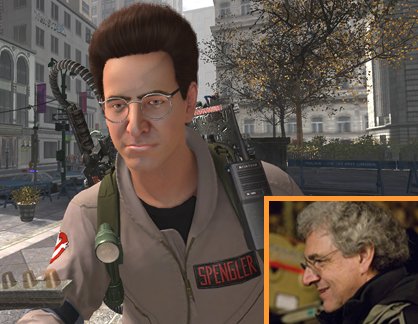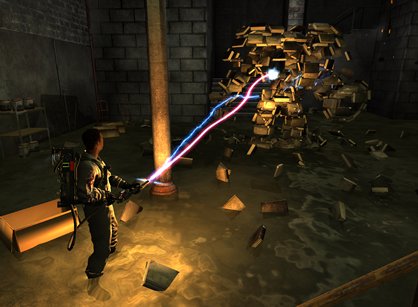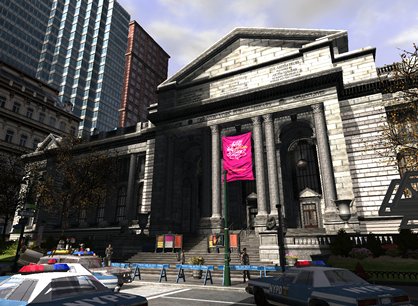Ghostbusters: the Harold Ramis interview
The franchise's co-creator talks gaming, sequels and the challenge of making videogames funny
It’s been 25 years since Harold Ramis, Dan Aykroyd, Bill Murray and Ernie Hudson saved New York City from the Stay Puft Marshmallow Man in Ghostbusters. After a theatrical sequel that didn’t live up to the original in many fans’ eyes, the quartet have reunited for an original videogame outing that unfolds like a third installment of the film franchise and ships today on PC, Xbox 360, PS3, Wii, PS2 and DS.

Above: Harold Ramis in the game as Dr. Egon Spengler, and as himself (inset)
Ramis, who co-wrote the original film with Aykroyd, reteamed with his old friend to ensure that the game lived up to the hype. We recently caught up with Ramis (whose latest film, Year One, opens June 19) to talk about his own gaming background and discusses the challenges of making videogames funny, as well as the status of the next Ghostbusters movie.
GamesRadar: What games did you play back when you were a kid?
Harold Ramis: Oh boy. Pong was a big hit if we go way back. I played Pac-Man. I’m an addictive personality and I saw how much time I could spend on games like Tetris. But as games got more complicated, I can’t say I lost interest, but I didn’t have the time to put into it to become good at games.
GR: Did you have a sense of what they’re doing with games today before the new Ghostbusters game came around?
HR: Oh yeah, absolutely. Watching my sons play each generation of Madden or the NBA games as they started actually using real player images and motion-capture on real people. We have an 80-inch plasma TV in the family room and I’ll walk in and glance up and think they’re watching an actual basketball game, but they’re playing a videogame. It’s really amazing.
Sign up to the GamesRadar+ Newsletter
Weekly digests, tales from the communities you love, and more

GR: What did you learn about the process of creating videogames through Ghostbusters?
HR: A lot of it was technical and it had to be technical, which was something we could not do because we weren’t doing the game design. It’s an interesting process. It would be like if you were writing a film and one person was assigned the physical action and you had to write dialogue to it. As a screenwriter, they’re linked together – the action and dialogue. In a way, it’s like writing a scenario without dialogue. Watching the process was interesting to me. I learned something, although I don’t know if it’s something I can actually apply.
GR: What was it like working with Terminal Reality?
HR: These are guys who grew up on Ghostbusters. The opportunity for them to give their input and consult for us was fun for them and obviously fun for us. The overall goals and the specific environments were approved by all of us.

GR: Did you add anything in particular to the game’s levels?
HR: I think Macy’s Day Parade was my idea, which was one of the game environments, which now is not in the game. They checked it out with us on the broad strokes level and I think they kept refining it, which I think for them was a lot of fun.
GR: If the game is a big hit, will that help with a movie getting made?
HR: There’s already work on a script for a third feature.
GR: Dan Aykroyd said he doesn’t believe anything until he sees a finished script.
HR: Well, that’s how I am, too.


